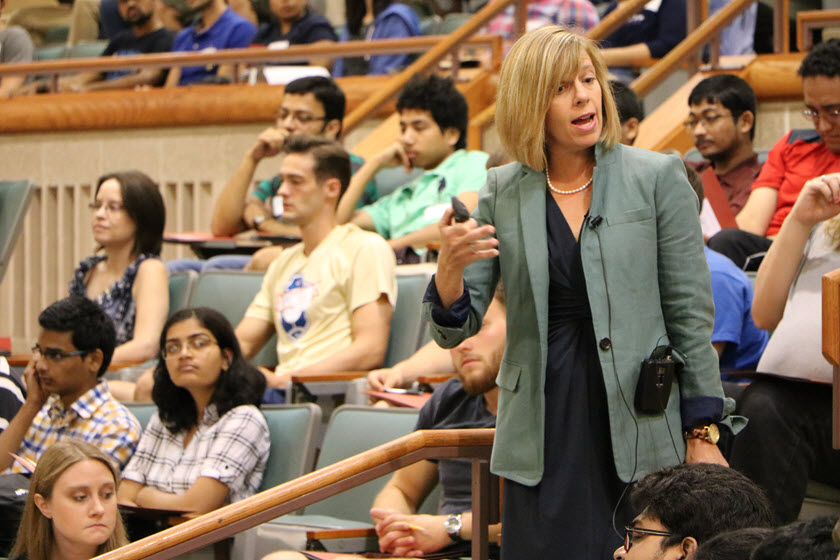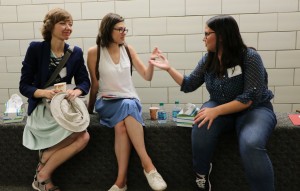At workshops for graduate teaching assistants on Monday, I shared one of my favorite quotes about education.
It’s from Joi Ito, director of MIT’s Media Lab. In a TED Talk on innovation last year, he said: “Education is what people do to you. Learning is what you do to yourself.”

He added, “What you need to learn is how to learn.”
Several students took issue with Ito’s premise of “education” as something imposed on students. They should. It’s a generalization that pulls in all the negative perceptions people have about schools and higher education. It draws on imagery of education as a factory where students are slathered with information as they move along a conveyor belt and tested for uniformity before they emerge at the end of the line wrapped in a generic diploma that guarantees they will provide the “right” answer on cue.
And yet that’s Ito’s point. Learning is individual. It’s something you take on because you see value in it for yourself. Ito dropped out of college twice and is largely self-taught, experiences that most certainly shape his perspective on education but should also inform ours. As educators, we need to stress the importance learning rather than information. We must provide approaches to learning that are as rich and varied as our students, and create opportunities for students to find their own meaning and relevance in our curricula.
In my classes, I tell students that I can’t make them learn. I provide material to help them learn. I try to create a classroom environment where they feel welcome, and lead discussions that I hope will inspire them to learn – and keep learning. But I can do only so much. Students have to meet me halfway. They must complete the work I assign, share their ideas, and participate in discussions. They must invest in the process of learning. Only then will they truly learn.

continued in the hallways of Wescoe Hall during lunch.
Most GTAs understand that, I think. After all, by making their way to graduate school they have learned to work within – and thrive in – the current educational system. As they shift from students to instructors, they must unravel the concept of learning and help their own students put it back together. That’s a challenging mission, one they will spend the rest of their careers trying to perfect.
The GTAs in my sessions had a good sense of how to begin that mission. When I asked them to consider how we can help students learn how to learn, the group discussions were robust and enlightening. Here are some of the responses:
- Ask good open-ended questions and provide concrete examples that lead to meaty discussions.
- Provide a variety of examples that allow students to approach ideas from many angles.
- Provide a variety of ways for students to demonstrate understanding.
- Vary the method of instruction to help students learn in different ways.
- Model the behavior you want students to follow.
- Draw on your own experiences with learning and use those as relatable examples.
- Help students make connections between academic topics and life.
- Scaffold class material so that students work in increments toward mastery of a subject.
- Humanize yourself as an instructor, make yourself available, and provide consistency throughout the semester.
The students’ suggestions provide an excellent framework for classes of all types. I hope they left the sessions feeling as energized as I did about the possibilities not just of education, but of learning.
Tagged active learning, GTA conference, GTAs, student engagement, student learning, workshops